
“Your ancestors called it magic… and you call it science. Well, I come from a place where they’re one and the same thing.”
Magic and technology have long enjoyed their separate tracks of power in speculative fiction. Its basic to imagine wizards casting a teleportation spell, and starships entering light speed as the two uniquely different things that they are (considering one can be backed up with scientific theory, and the other is arm-wavy hocus pocus). Unless you view both concepts in a “black box“, there is no mistake that the technological and the magical are vastly different in their inner workings. They are truly two forces divided by their respective genres and audiences.
However, this isnt always the case. More in the past few decades, story worlds have emerged that dare to combine these ideas together. In some, magic and tech work in harmony to enable something greater. In others, that mysterious black box comes into play, obscuring the details as to make them seem indistinguishable from one another to the unknowing eye. In the gaps, invisible mechanics and synergy reign supreme, enough to do something that every speculative story aims to accomplish; suspending the viewers belief.
As a storytelling enthusiast and geek-about-town, I’ve seen this theme grow more and more prevalent in video games, novels, TTRPGs, movies, TV shows, and other media. Magic and technology; the uncanny chocolate and peanut butter fusion of speculative fiction!
Today, I poke at ideas long plaguing the minds of the internet for some time about the nature of magic and technology in science fiction and fantasy.
While the question about the difference between the three is easy enough to ask, the context of each is not just different, some definitions make them so categorically different that to represent them beside each other might be inaccurate in and of itself. Enough to hamstring any attempts to give them their due respect in a criminal lineup of completely unrelated individuals. Still, I’ve taken it upon myself to perform the difficult task of defining them according to their appearances in pop culture.
Its time to unwrap the bag, toss that bread in the toaster, open up the JIF and Nutella, and prepare for a fantasy snack for the brain!
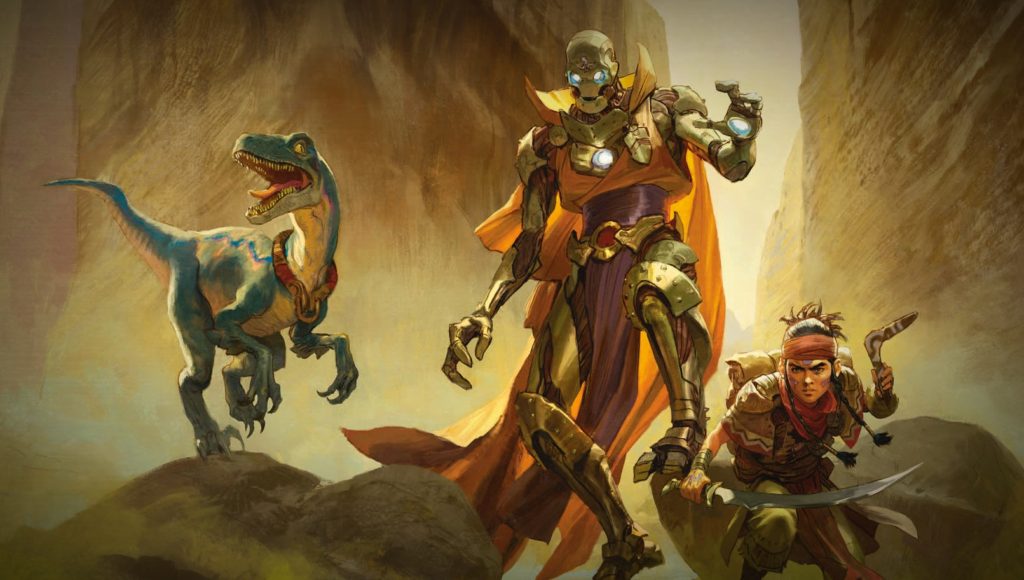
What is Magitech?
In its simplest terms, Magitech (or Magitek) combines magic with technology in order gain the best of both worlds. While that description captures each of our terms in this article, there is a more storied history with Magitech as an overall concept.
The idea of magic and science fusing together has been a hallmark of many a story since the early 20th century. Early novels (A Wrinkle in Time, Out of the Silent Planet, Dune), sci-fi movies and TV (Star Wars), Marvel graphic novels, and early releases in the tabletop space (Spelljammer, GURPS) sought to imagine realms between fantastic science and sufficiently analyzed magic, while the line between remained intact.
However, its more direct fusion wasn’t mainstreamed until the mid-90’s with the english-translated release of Final Fantasy III (FF6 in Japan) where the term of Magitek emerged proper in the form of piloted vehicles and combat mechs, among other things in later Final Fantasy games.
From this point, the idea of magical technology would become a staple in many a Final Fantasy-inspired JRPG of the era, and would go on to continue breaking the mold of sci-fi/fantasy around the globe thereafter; from anime (Full Metal Alchemist, Naruto), to TTRPG realms (Eberron), to movies and TV (Thor, Arcane), and video games (League of Legends, Nier: Automata, Terraria).
When you think about it, the fusion of these elements seems like a forgone conclusion. Magic is a powerful element in fantasy, and often free from logical explanation. However, science fiction and modern audiences expect a level of scientific analysis for what is happening in any given tale. Combining these forces of technology and magic allows a bridge between audiences, allowing a medium for more broad speculative storytelling.
However, even with the concept defined, its representation is varied. Most versions depict a world where technology and magic are so interwoven, a typical bystander is unable to distinguish the difference between technology and magic (See “Clarks Third Law“). A sort of black box, as referenced earlier, where the contents inside are unknowable or overly convoluted. Others seek to explain it in a level of detail that provides methods and means, but only enough to suspend reader belief.
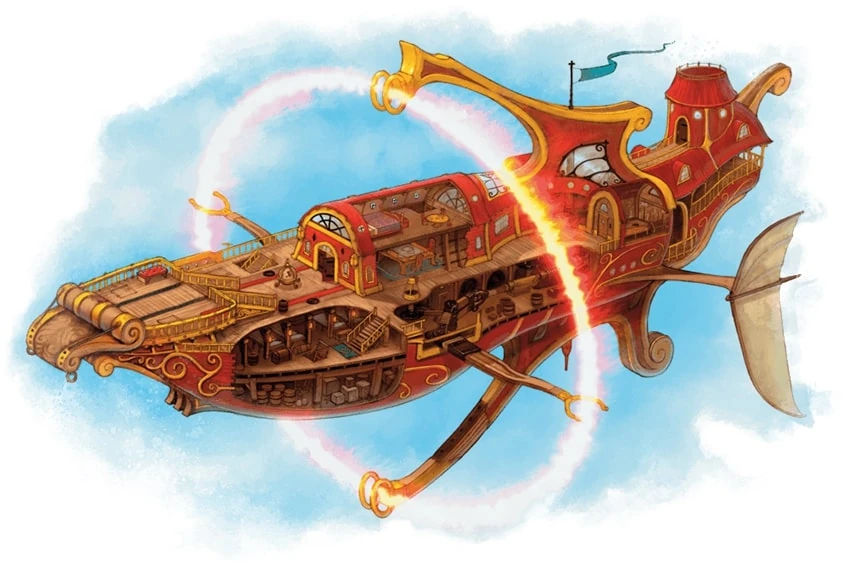
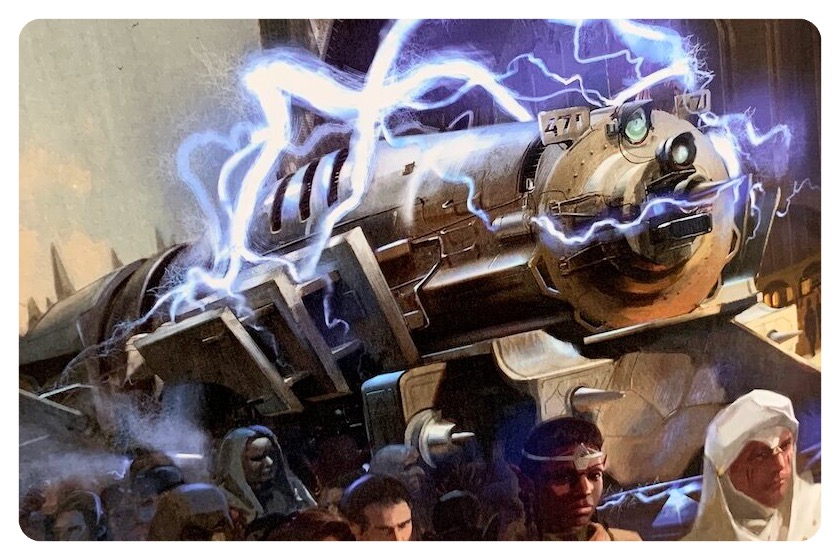
What is Magitech in relation to Aetherpunk and Technomancy?
One of the biggest contentions I’ve found in researching Magitech is how unbelievably broad, yet extremely narrow its definition is. If it is defined as combining magic and technology, that creates an enormous amount of ground to cover. Yet, when we get more granular, and trim off the extra fat, you suddenly have a subset of ideas that stoke a never-ending debate about what does and does not count.
While one might suggest Aetherpunk and Technomancy are branches on the tree of genre-fusion, where Magitech can be considered a larger branch closer to the trunk, the challenge remains stubborn. The variability of sci-fi and fantasy stories make it difficult to define the term as a sub-genre or setting-type. One might get away with calling it a concept or trope in its purest form, but I refuse! This is the internet, and we don’t applaud laziness here! … If we’re going to piece together this puzzle, we have to settle on something far more concrete!
So, instead of trying to ride the wave of multiple definitions and getting caught in the maelstrom of debate over the outer limits of its reach, lets instead focus on how the term is used in conversation and the context of where it appears. You see, whenever someone speaks of magitech, they are almost always addressing a specific piece of innovation. Something can be built and function through the powers of magitech. It can bear the title in its name as a device or vehicle. Yet, you would never call a civilization, a society, a city, or an organization “magitech”. The closest you could get with that would be calling such a thing driven, powered, or built upon magitech. Neither can a containing media, like a book, movie, or comic series can formally be genre labelled as such.
Therefore, the term Magitech can only refer to the composition of the “thing” itself, and the powers of its function.
Lightning rail train driven by a bound air elemental. Power armor that protects the wearer from elemental chaos through magical synergy. Mecha-golems with crystal chest pieces that shoot ice crystals from its hands.
When taken together, we have the most accurate definition we can come up with: Magitech is an individualized device or enterprise of technologies driven by, built upon, or harnessing of magic.
So, if we can define Magitech as such, what separates it from our other two fusions?
What is Aetherpunk?
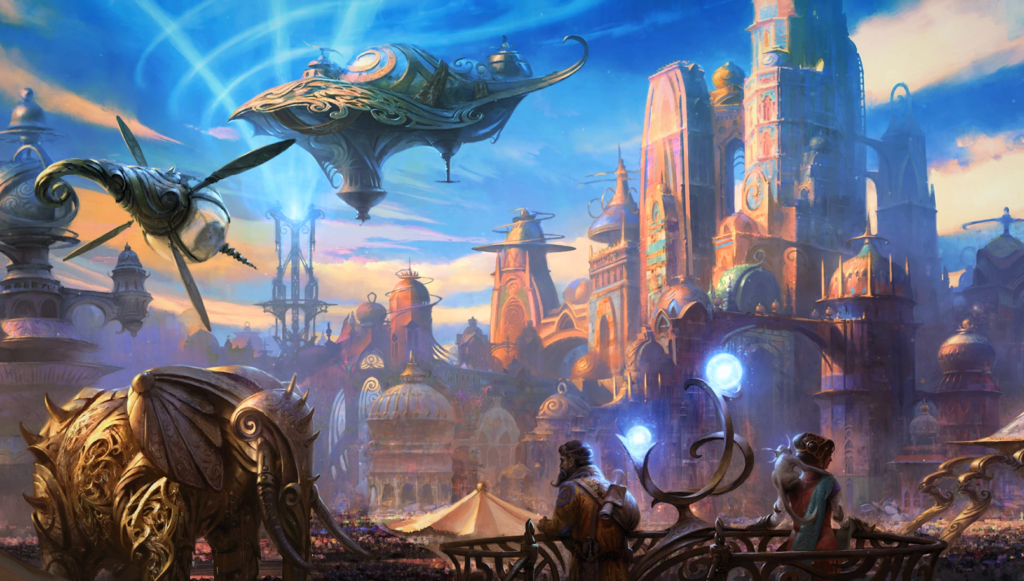
One of the most diverse variation of the “punk” subgenres of sci-fi and fantasy, Aetherpunk encompasses numerous speculative settings, from Kaladesh in the Magic the Gathering universe (“Kaladesh” and “Aether Revolt“), to Asgard as represented in the Marvel Cinematic Universe, to the realms depicted in Arcane and League of Legends.
You’ll notice I’ve referenced a couple of these in the Magitech section above. Indeed, we have a significant overlap between these ideas that stirs up confusion even further. However, we can again find some answers in the context of how and where Aetherpunk is depicted.
Digging into the nomenclature, aether is often wielded as a magical stand-in for a more conventional power source. This “cosmic stuff” is presented akin to how older philosophers in the real world viewed electricity and magnetism before the advent of modern science; a mystical force exists beyond the terrestrial sphere. In fictional realms, it can levitate sky-ships, enable energy-based weapons, and generate electric power throughout an entire city. Granted, certain franchises will opt for other pseudo-scientific/magic terms, like anima, phlogiston, “insert cool name” particles, or (*sigh*) midichlorians.
(Just remember kids; despite how fans feel about their favorite science fantasy series, any made-up-particle that is virtually indistinguishable from magic is fair game for opinionation here.)
The “punk” half of the equation, however, adds some extra fire to our proverbial toaster. This wave of fantastical subgenres over the past couple decades is its own dogpile of debate, as the suffix has been both successfully and erroneously attached left and right to stories and properties due to an aesthetic misunderstanding of a thing.
Distilled to its base, punk is a revolt against tradition in service to change in the form of big and bold ideas that shape the social fabric. This dynamic creates worlds of alternate history, exaggerated technologies, bold fashion statements, and the speculative playground of revolutionary societal and political ideas.
What sets Aetherpunk apart from its peers?
In Aetherpunk, we run into the reverse trend as in Magitech.
Devices, equipment, and vehicles that are built to channel the powers of aether can employ the term somewhere in its title, but you would never call something an “Aetherpunk skyship”.
Additionally, if we were to take an entire civilization based on magitech devices, we still wouldn’t end up with Aetherpunk, as they are simply tools in the end. Tools themselves cant define the lifeblood of the society, the history of politics and enlightenment, a peoples struggle and march toward a greater future, etc. We’re not just talking about a consumer-level convenience. We’re talking about pure transformation toward utopian ideals, even if its surrounded by dystopian influences.
Therefore, I propose the following three rules:
- The key technologies of that civilization, society, city, or region must be based on the same “cosmic stuff“.
- The harnessing of the “cosmic stuff” must be integral to not just the technological makeup, but the social identity of the realm in question. Enough to define not just technology, but aesthetics, architecture, politics, fashion, humanities, religion, etc.
- The society in question must be aspirational, and follow a revolutionary fervor which is enabled by the harnessing of said “cosmic stuff”.
We can see that it is not a world simply augmented by magical tech, but at the core of its culture, and something that is harnessed to the extent of solving massive societal problems can in and of itself shape the world and its people.
In the scope of other punk genres, its representations are broad, but it finds itself in a unique place amongst its peers. Aetherpunk combats the dystopian challenges of Cyberpunk, embracing the enthusiastic innovative aura of Steampunk, and dares to dream a speculative utopia in the path of Solarpunk.
Like Steampunk before it, where an alternate Victorian era is dominated by mass innovation by way of steam and clockwork, it dials the cool-factor up to eleven, oozing in big ideas and personality which borders on the absurd but is nevertheless awesome.


What is Technomancy?
Third, we have an underdog contender in this match of ideas fusing magic and technology. This time, we escape the boundaries of genre, and instead focus on a world built upon pre-existing modern technology that already functions well on its own through scientific means. However, here, the practitioners of craft wield a mysterious “magic” to manipulate its function to their will.
Dependent on the setting, it could be a magician or wizard with skills in channeling energy into TVs, networking cables, computers, and mainframes to control them, or an augmented trans-human wielding superior technology or cybernetics that functions silently and invisibly to affect and access the target host. This is where we take the “technology indistinguishable from magic” concept and flip it to the other side of the coin, where it is technology that looks like magic,… not the other way around.
A prominent example of this is Cyberpunk (the TTRPG and video game, not the genre) and the Technomancer role. The same idea is seen in other sci-fi franchises such as Babylon 5, in where techno-magic is (by definition) the application of advanced technology that carries the illusion of appearing magical. Video games with strong themes of technopathy such as The Legend of Zelda: Breath of the Wild / Tears of the Kingdom, and Horizon: Zero Dawn utilizes technology that is mysterious, yet incredibly advanced. In each example, we can see the “black box” is in full effect, concealing the visibility or the capability to understand its inner workings as to make it akin to sorcery.
One would be forgiven to compare these specialists to “hackers”. In a way, public mystery about hacking and its methods lend to the vibe that it is somewhere akin to wizardry (as one can witness in many a terrible-yet-amusing hacking sequence in American TV crime dramas).
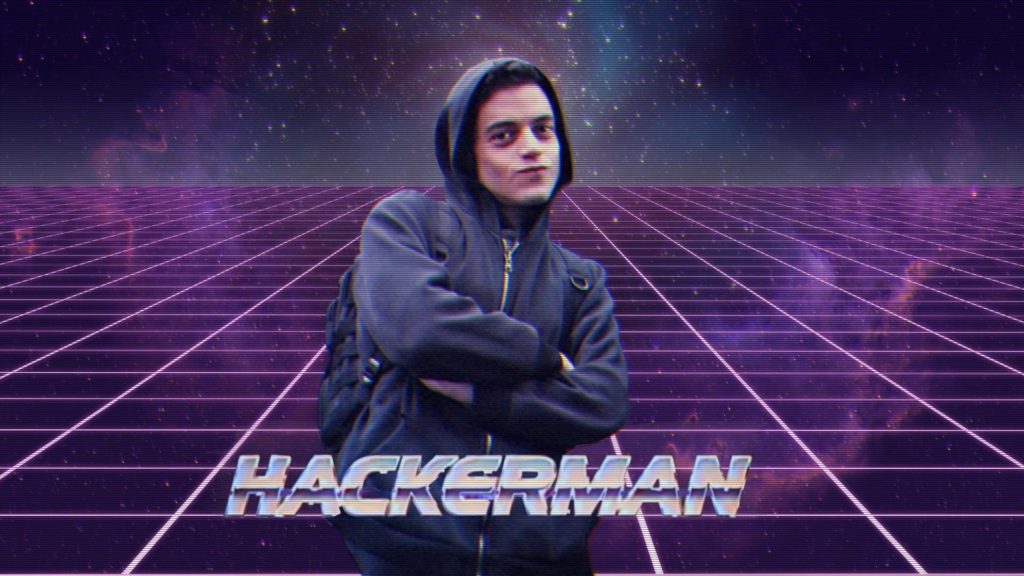
However, this category also includes stories and worlds where magic is a legitimate force. This can carry the image of a heroic superpower plucked from the Marvel universe, or as an urban fantasy of true wizard types who use their craft cleverly to affect and manipulate humanity’s electronic infrastructure, amongst other spells.
In countless DC and Marvel comic books, numerous heroes wield technology through superpowers that are nigh inexplicable for the sake of the story. In the table-top game Mage: The Ascension, it is established that reality is not static; it is agreed upon by the populace, and that mages can manipulate these rules as they please, including how technology functions. Then, there is psionics with the power to manipulate tech akin the Twilight Zone.
Whats set Technomancy apart from the others?
Unlike our previous concepts, the focus of our fusion is no longer on the tools used, or on social identity. In Technomancy (or technopathy), the emphasis is on a world of modern means, and in that world, there exists those with highly specialized abilities, informed by talented, gifts, mental prowess, training, or human augmentation.
Technomancy is an odd entry for this reason. You might be right to argue that it is categorically wrong for it to appear on this list, as no books, movies, comics, TV shows, TTRPGs, or other pieces of media call themselves “Technomantic”. The talent of controlling computers with your mind, or manipulating a telecommunications broadcast using magic or reality-bending is a staple of many genres, but it is just one of many speculative constructs that exist in the broad galaxy of sci-fi storytelling.
All stories that embrace technomancy do so in the context of the world that allows such a profession to exist. It is a world built on post-modern infrastructure, social problems, and struggles. That could be a cyberpunk realm, a modern one with mystical elements, or one infused with symmetrical (or asymmetrical) competing superpowers.
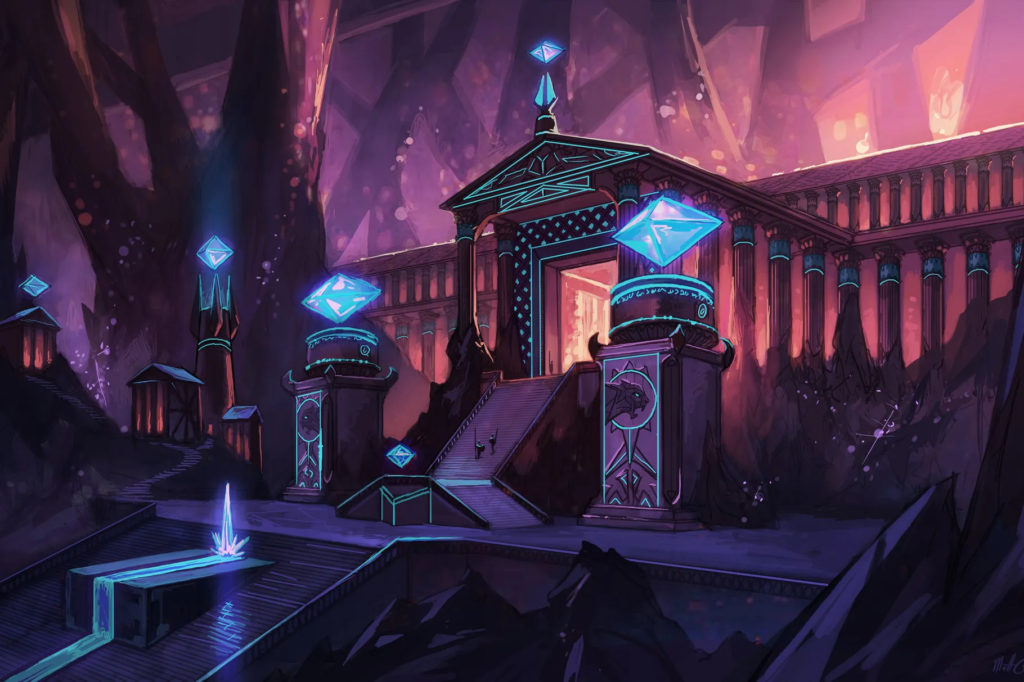
Final Thoughts
You might be wondering what the value to measuring the difference between these three items. Part of it may be on a fantastical curiosity, or an impulse of making sense of ideas that have floated around the storytelling space in the past century.
However, I believe it is a relevant distinction to make, as all three versions of magic and technology fusion tell something unique about what draws us towards these stories, and how we reflect upon real world ideas in a more simulated manner.
We’ve looked at ways to apply logic to magic as a creative exercise. We’ve applied how these inventions and their use can inform how the structure of civilization changes. We’ve seen how tapping into otherwise mysterious powers can transform and uplift an entire society in body, mind, and soul. We’ve seem great examples of how human beings enrich their imagination through suspension of belief. We’ve even reflected on how the parts of technology we don’t understand can sometimes seem shrouded in mystery, and that gives us a story choice between a world of higher literacy, or one of escapism.
It is a reminder that out penchant of telling fantastical stories with amazing ideas is not some age-old writing tradition where we are left to mine the cavern of finite ideas for unique rare gems. It is a living, breathing practice that takes place in the present, and evolves in acceptance and fascination as the times change.
Magic was never going to vanish from fantastical stories. Technology is only becoming more prevalent in our lives as years pass. As stated before, stories that embrace their fusion are a foregone conclusion, which I’m pleased to see more of in the coming years.
Thank you all for reading!
When you think about it, using the internet to talk about magic and technology is its own kind of fusion! … If you enjoyed this mix of speculative fiction and worldbuilding analysis, you might enjoy one of these other articles:
- Axolotls, Genies, and Kaiju; a Quick TTRPG Zine Roundup #2 - May 19, 2025
- d100 City Encounters and Urban Sidequests - April 26, 2025
- Dirtbags! a Sci-Fi Shooter RPG: Gameplay Review! - March 23, 2025


